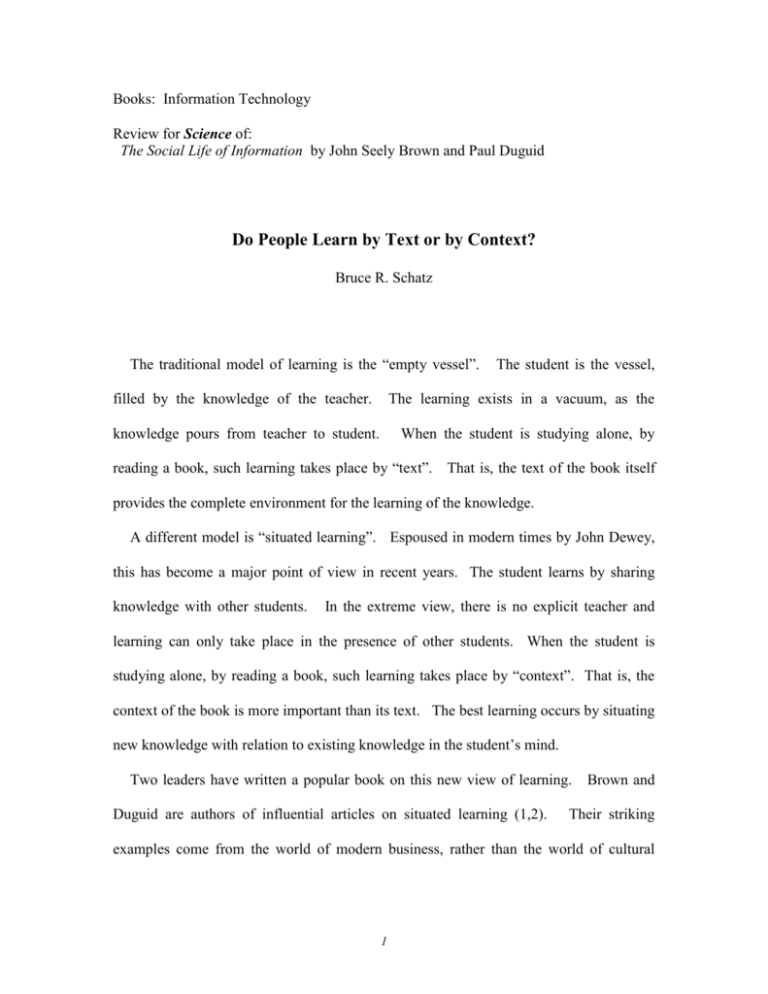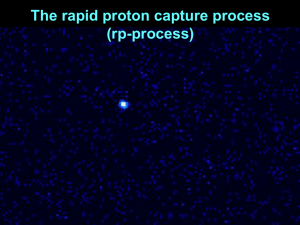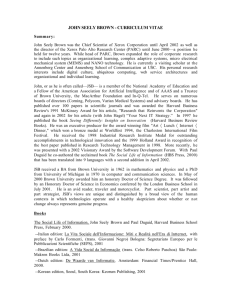Books: Information Technology - CANIS: Community Architectures
advertisement

Books: Information Technology Review for Science of: The Social Life of Information by John Seely Brown and Paul Duguid Do People Learn by Text or by Context? Bruce R. Schatz The traditional model of learning is the “empty vessel”. filled by the knowledge of the teacher. The student is the vessel, The learning exists in a vacuum, as the knowledge pours from teacher to student. When the student is studying alone, by reading a book, such learning takes place by “text”. That is, the text of the book itself provides the complete environment for the learning of the knowledge. A different model is “situated learning”. Espoused in modern times by John Dewey, this has become a major point of view in recent years. The student learns by sharing knowledge with other students. In the extreme view, there is no explicit teacher and learning can only take place in the presence of other students. When the student is studying alone, by reading a book, such learning takes place by “context”. That is, the context of the book is more important than its text. The best learning occurs by situating new knowledge with relation to existing knowledge in the student’s mind. Two leaders have written a popular book on this new view of learning. Duguid are authors of influential articles on situated learning (1,2). Brown and Their striking examples come from the world of modern business, rather than the world of cultural 1 anthropology. They discuss the learning processes of copier repairmen, rather than of native tribesmen. One suspects that this business orientation plays a large role in the popular appeal of this book. John Seely Brown is the Chief Scientist at Xerox Corporation and Director of its famed Palo Alto Research Center (Xerox PARC). At Xerox, he has pushed for applications of social science to business models, particularly establishing the Institute for Research on Learning as a home for cultural anthropology of business organizations. This apparently strange point of view has many adherents. The book discusses the famous lament of Lew Platt, chairman of Hewlett-Packard, as he considered how much better the firm would be “if only we knew what we know at HP”. Even for the widely admired HP corporate culture, nobody really knows where the organizational memory is. Anthropologists at Xerox concluded that service technicians learn most from each other, rather than from trainers or manuals. When situations to encourage peer contacts are instituted, learning increases and so does productivity. Extreme views do not match the real world, and the authors are even-handed in presenting different forms of learning and their applicability. The most effective combinations seem to include teachers and students, vessels and situations. Formal instructional training is helpful, but so is informal learning at the water cooler. Although commercial examples dominate this book, other organizations are well covered. The final chapter analyzing universities is particularly insightful, and describes their niche of credentialing, e.g. a university’s competitive edge is as a Degree Granting Body. 2 As befits a popular book, the writing is clear and self-contained. The style is thoughtful and measured, not polemic as common in books on information technology. Many scientists may find the discussions superficial, however, with brief examples and choppy presentations. The same authors’ articles have detailed examples within theoretical frameworks. Their book has the flavor of a high-level slide show, making as many soundbites as possible. The best books on new points of view have clear themes that the examples hammer away at, to make the unusual clear to divergent audiences. There is much philosophy in this book, but it meanders significantly. Some meandering may be intentional, as the jacket cover proclaims “the way forward is paradoxically to look not ahead, but to look around.” But the lack of structure prevents these experts from producing the classic book on the new paradigm that they could have. Instead, the book wanders through a wide range of current examples. It reads like this year’s business model, rather than this decade’s scientific model. In this respect, it is surprising that the authors touch so lightly on the future implications of the Net. The evolution of the Net is in fact a trend of moving from text to context (3). In transforming from the ARPAnet to the Internet, the transmission of bits has moved from unstructured files existing in a vacuum to structured documents embedded within relationships. The next wave of the Net will transform the Internet into the Interspace, where users navigate across abstract spaces of concepts instead of across concrete links of documents. In the Interspace, context is used to approximate meaning (4). The contextual frequency of word phrases within documents is used to support scalable semantics. 3 As the authors say concisely, “context shapes content”. Both the text of a document and the context of a learner are important. The authors navigate the highway of knowledge, by deliberately wandering along the side of the road. As a thoughtful context to the emerging Net Millennium, this book serves well. Readers seeking a systematic text must look elsewhere. Bruce R. Schatz is the Director of the CANIS Laboratory (Community Architectures for Network Information Systems) and Professor in the Graduate School of Library and Information Science at the University of Illinois at Urbana-Champaign, 704 S. Sixth, Champaign, IL 61820 USA. Email: schatz@uiuc.edu, www.canis.uiuc.edu . References 1. 2. 3. 4. J. Brown and P. Duguid, Education Researcher 18, 32 (1989). J. Brown and P. Duguid, Organization Science 2, 40 (1991). B. Schatz, Science 275, 327 (17 Jan 1997). B. Schatz, et. al., Computer 32, 51 (Feb 1999). 4








